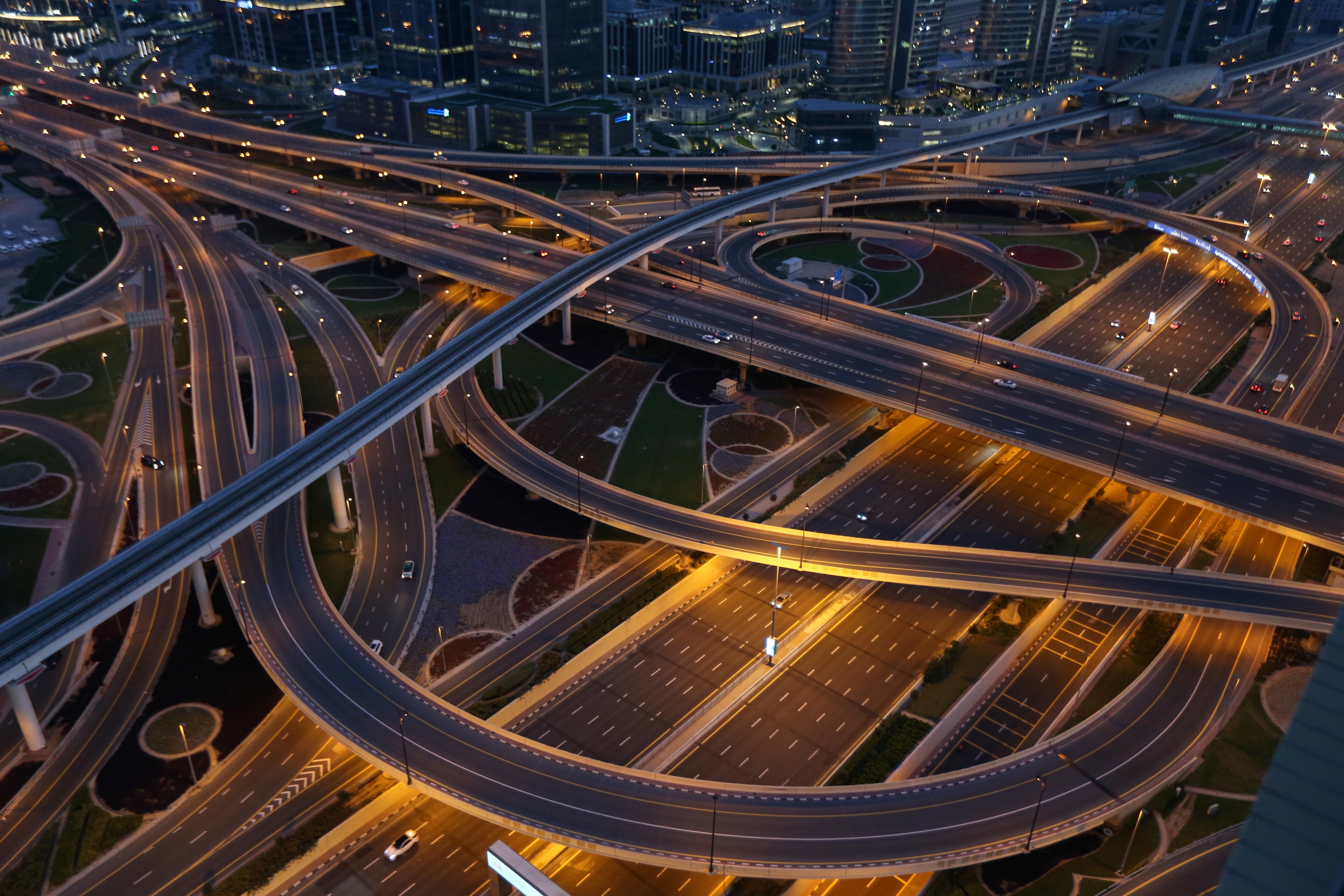These 4 approaches to everyday deliveries could make life better in cities

E-commerce retail sales are expected to reach more than $8 trillion by 2027.
Image: Unsplash/Wynand van Poortvliet
Stay up to date:
The Digital Economy
- E-commerce brings countless benefits to urban life. However, with retail sales expected to grow 39% by 2027, reaching over $8 trillion annually, it is important to manage the impact of delivery traffic.
- Traditional delivery fleets generate emissions and contribute to congestion, which can also have negative impacts on health, community and economy, according to a new white paper from the World Economic Forum and Accenture that explores the rise in delivery culture and the strategies to ensure continued enhancement of urban life.
- Here, we outline the paper’s key takeaways, including four ways the public and private sector are collaborating to make deliveries more efficient and sustainable.
Online shopping and e-commerce have been on a steep growth curve since the COVID-19 pandemic, given the clear benefits of convenience and choice. Clothes, home supplies, groceries and takeaway food – virtually everything can be delivered to your home or business. Delivery vehicles are an increasingly common sight on urban roads, with multiple operators visiting the same homes and businesses across cities.
There is no end to this success story: by 2027, e-commerce retail sales are expected to grow by another 39% to more than $8 trillion, according to Statista.
There is a cost, however, associated with this convenience, beyond just the monetary. As Mark Briganti, Global Lead for Postal and Parcel Industry at Accenture explains: “The rise of delivery vehicles in urban centers is astounding just as more and more cities are looking at combatting congestion from all vehicles. We see a collision course underway with the confluence of municipal regulations, the number of delivery vehicles, increasing e-commerce and increasing costs of last mile deliveries. It is inevitable that city governments and the private sector need to work together to make urban deliveries more efficient.“
A new white paper from the World Economic Forum in association with Accenture identifies increasing traffic congestion, greenhouse gas emissions and health as some of the potential hidden costs associated with city deliveries. Transforming Urban Logistics: A Path to Sustainable and Efficient Last-Mile Delivery in Cities examines the drivers of this delivery culture and the role of the ecosystem in driving change.
How the growth of urban deliveries is affecting cities
The expansion of e-commerce has been brought about by the combined forces of urbanization, rising middle-class incomes, changing consumer behaviour and technological advancements. Lockdowns during the pandemic further boosted these trends and e-commerce is now substantially outpacing brick-and-mortar retail.
Speed of delivery is a key differentiator for e-commerce businesses. Consumers use delivery speed as a factor in choosing where to shop, with delivery to the home still widely preferred to the alternative out-of-home options.
If the status quo is maintained, we can expect a more than 60% average increase globally in the number of delivery vehicles on urban roads by 2030.
As deliveries grow, some urban planners are focused on creating more sustainable and liveable cities. These cities are creating a modal shift by reallocating road space to prioritize public transport and active travel.
Meanwhile, many emerging cities with poor public transport and high car use already struggle with severe congestion, which will worsen with the growing number of delivery vehicles.
Why last-mile deliveries impact congestion, emissions and health
The world’s cities face substantial increases in commuting times without drastic changes.
The report finds that by 2030, a business-as-usual approach could add an additional five minutes to every daily commute, and delivery vehicles could spend more than half an hour extra on the road every day. Emissions from urban – or ‘last-mile’ – deliveries are projected to rise by 60% by 2030, accounting for 13% of cities’ total carbon emissions.
Increased congestion doesn't just exacerbate emissions from transport. The resulting reduced air quality directly affects people's health and time spent in traffic causes additional stress. Furthermore, cyclists or pedestrians can be unwilling to ride or walk traffic-filled roads, bringing additional negative health impacts.
These trends could impact the world’s fastest-growing cities most, like Bengaluru in India, thanks to their still evolving public transport systems.
To improve the liveability of cities, we need to ensure that delivery and logistics operations are considered and fully integrated into the urban ecosystem.

How public-private collaboration is driving change in the last-mile
Collaboration across the stakeholder ecosystem will be crucial in minimizing the impact of last-mile deliveries on urban liveability.
Our research cites a number of innovative approaches being implemented by city governments and their stakeholders.

1. Pick-Up and Drop-off networks
There is a growing Pick-Up and Drop-Off (PUDO) network emerging, which includes parcel shops and lockers as an alternative to traditional front-door delivery.
This approach dramatically reduces failed home deliveries, where couriers must take a package back to the depot and drive back to attempt delivery the next day. As a result, it eliminates extra vehicle miles to deliver these packages, helping to address emissions and congestion.
2. White label deliveries
Rather than multiple retailers dispatching their vehicles to the same area, microhubs can consolidate deliveries in specific neighbourhoods or street networks.
With white label deliveries, a single operator serves a neighbourhood, with other delivery companies handing off their consignments to this operator. This approach helps sidestep the typical replication of logistics infrastructure, including fleets and delivery journeys, where multiple couriers could visit a single home in the same day.
3. Electric and autonomous vehicles
As an alternative to fossil-fuel delivery vans, combining electric vehicles with micromobility fleets, like electric bikes, can reduce emissions by up to 93%, enabled by the use of microhubs. In addition, the smaller physical footprint of bikes helps to use public spaces more efficiently.
Beyond this, the paper finds that autonomous vehicles, including ground-based and aerial drones, also present opportunities to free up busy streets, potentially reducing congestion by up to 13% and helping to combat emissions.
Adoption of autonomous drones are slowed by the need to develop frameworks for how these will operate in cities. However, this innovative approach could unlock capacity in the sky and elsewhere.
4. Smart kerbsides
Kerbside space is critical for loading and unloading goods, parking, cycling and even to create public spaces for an on-street café culture.
City kerbsides are often an under-valued and oversubscribed resource. Kerb space can be managed more effectively by deploying technology that dynamically allocates certain uses at different times to improve traffic flow, reduce congestion and improve user experience.
Delivery vehicles spend an average of 30 seconds per delivery looking for parking spaces. This increases fuel consumption and congestion while decreasing efficiency since each individual delivery takes longer.
Strategically planned parking zones for deliveries could therefore reduce congestion by 3% and carbon emissions by 9%.
Beyond the four topics highlighted here, the white paper also considers some of the many other components and solution spaces in last-mile deliveries.

A collaborative effort to optimize urban deliveries
Ecosystem collaboration is essential to enabling continued growth in e-commerce and to meet the expectations of consumers, whilst ensuring our cities are sustainable and liveable.
City governments must create regulatory frameworks that protect liveability while making space available for innovative new delivery approaches.
Private-sector players like last-mile couriers, logistics providers and retailers must explore new operational models to reduce impact on congestion and emissions, such as investing in parcel lockers and decarbonizing their fleets.
The white paper concludes that approaching urban deliveries collaboratively will enable the public and private sectors to collectively create an environment that allows urban logistics to further enhance a city’s liveability.
Accept our marketing cookies to access this content.
These cookies are currently disabled in your browser.
Don't miss any update on this topic
Create a free account and access your personalized content collection with our latest publications and analyses.
License and Republishing
World Economic Forum articles may be republished in accordance with the Creative Commons Attribution-NonCommercial-NoDerivatives 4.0 International Public License, and in accordance with our Terms of Use.
The views expressed in this article are those of the author alone and not the World Economic Forum.
Related topics:
Forum Stories newsletter
Bringing you weekly curated insights and analysis on the global issues that matter.
More on Urban TransformationSee all
Muhammad Hassan Dajana and James Balzer
July 22, 2025
Olivia Nielsen
July 16, 2025
Luis Antonio Ramirez Garcia
July 14, 2025
Sam Markey, Basmah AlBuhairan, Muhammad Al-Humayed and Anu Devi
July 8, 2025
Jeff Merritt, Charlotte Boutboul and Marc Biosca
July 2, 2025




